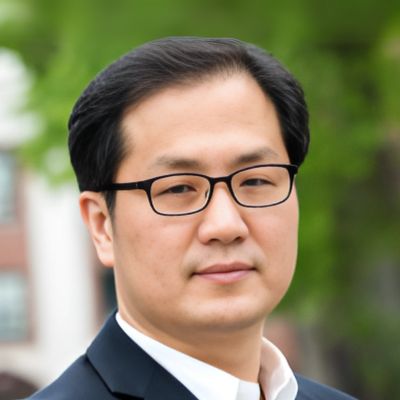
Not all breast cancers are the same. This is particularly true about metastatic breast cancer versus early-stage breast cancer in terms of how the disease spreads, its prognosis, treatment options, and even the patient journey.
At Daiichi Sankyo, we strive to continue to redefine breast cancer treatment to achieve better outcomes. Understanding the nuances of metastatic breast cancer (mBC) is a critical part of our approach to creating innovative medicines with the potential to change the standard of care. Everything from the intricacies of the disease to the needs of the patient are taken into consideration, influencing and guiding our choices every step along the research and development path.
How is Metastatic Breast Cancer Different from Early-Stage Breast Cancer?
Metastatic breast cancer, also known as stage IV breast cancer, is the most advanced form of breast cancer, characterized by the spread of cancer cells beyond the breast and nearby lymph nodes to distant organs, such as the bone, liver, lung or brain. The spreading occurs through the bloodstream or lymphatic system, allowing cancer cells to establish new tumors in other parts of the body.
In contrast, early-stage breast cancer is localized to the breast and at times nearby lymph nodes, making the prognosis for early-stage breast cancer generally more favorable compared to metastatic breast cancer, as the disease is contained and more amenable to and manageable with localized treatments at this stage.
 Abderrahmane Laadem, M.D., Head of Late-Stage Oncology Clinical Development
Abderrahmane Laadem, M.D., Head of Late-Stage Oncology Clinical Development
A More Complex Disease
“While scientists have made significant progress in understanding cancer, the exact reasons why certain cancers, including breast, progress to metastatic or behave differently than others are not fully understood. Research has shown that differences at cellular and molecular levels play a crucial role in cancer progression. Early breast cancer is often driven by a defined set of molecular alterations, while metastatic breast cancer evolves into a genetically complex and heterogeneous disease.
Metastatic cancer is tricky because it can keep changing in ways that make it harder to treat. It can develop new genetic changes, switch how its genes are turned on or off, and create different groups of cancer cells within the same tumor. All these changes help the cancer grow, spread to other parts of the body, and resist treatments.”
How do these Differences Alter the Treatment Landscape?
Early-stage breast cancer is considered more treatable as the tumor burden is generally small. In these cases, the primary goal is to remove cancer cells through surgery then destroy any remaining cancer cells with radiation, and in some cases systemic therapies, to prevent recurrence.
Metastatic breast cancer signifies the spread of cancer cells from the initial site in the breast to multiple locations throughout the body, rendering localized treatments such as surgery insufficient. Consequently, patients at the metastatic stage require systemic therapy which aims to manage symptoms, delay progression, and ultimately prolong survival. Systemic therapies range from hormone therapy and chemotherapy to immunotherapy and targeted therapies such as antibody drug conjugates.
For patients with metastatic breast cancer, the treatment journey is more nuanced. Metastatic cancer tends to present as larger or multiple tumors, is more aggressive as it progresses and can even develop resistance to certain treatments, all creating a unique pathway for possible treatment strategies for each patient to discuss with their healthcare provider. Together, they must determine not only which treatment options to utilize, but what the right regimen sequence is as well.
 Peter Soonmo Kang, M.D., VP, Head of Late-Stage Clinical Development (3-ADC)
Peter Soonmo Kang, M.D., VP, Head of Late-Stage Clinical Development (3-ADC)
Emerging Breakthrough Treatments
“The unwavering dedication of researchers at Daiichi Sankyo, led by the late, esteemed Dr. Toshinori Agatsuma, resulted in the creation and advancement of the Daiichi Sankyo proprietary DXd ADC Technology*. This breakthrough has been instrumental in developing innovative treatment options for patients with certain cancers, such as our HER2 directed ADC.
What sets this treatment apart is its ability to bind to the HER2 receptor. This enables the delivery of our potent and unique payload, which enables a bystander antitumor effect**, resulting in elimination of both target and neighboring cells present in the tumor microenvironment.”
How is Daiichi Sankyo Continuing to Innovate for Patients?
Ongoing research continues to push the boundaries of cancer treatment development at Daiichi Sankyo. Our efforts are focused on maximizing the potential of these targeted therapies and exploring new targets for treatment, including those in the neoadjuvant setting. By combining these advanced therapies with other cancer medicines, researchers aim to overcome drug resistance and improve outcomes.
While metastatic breast cancer is often associated with aggressive tumors, early-stage cancers can also exhibit aggressive behavior and progress rapidly. Identifying markers of early relapse is critical, and researchers are exploring promising avenues to detect patients with aggressive tumors who may benefit from tailored therapies.
The distinction between metastatic and early-stage breast cancer is crucial in shaping treatment strategies and patient care. Continued commitment to understanding these differences drives the development of innovative therapies that may address the diverse needs of patients at different stages of the disease.
___________________________________
*DXd ADC Technology leverages clinically validated technology, which includes a plasma-stable, selectively cleavable linker and potent topoisomerase I inhibitor payload.
**The bystander effect refers to a phenomenon where not only the targeted cancer cells are affected by a therapeutic agent, but also the neighboring cells present in tumor microenvironment.
Suggestions
My decision to devote my career to oncology is deeply personal. During my senior year in college, my father was diagnosed with cholangiocarcinoma, or bile duct cancer. As one of his caregivers…
Not all breast cancers are the same. This is particularly true about metastatic breast cancer versus early-stage breast cancer in terms of how the disease spreads, its prognosis, treatment options, and even the patient journey.
Business development is the craft of making connections. Whether with other companies or within our organization, we need to build those bonds that allow us to be successful.